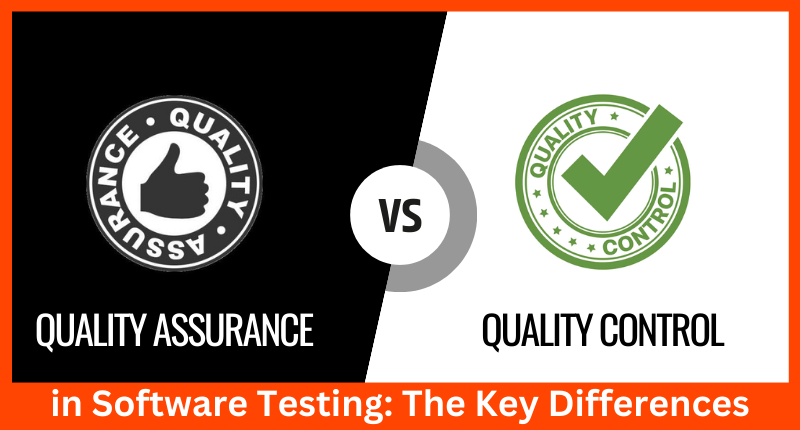In the world of software development, ensuring the delivery of high-quality software products is paramount. To achieve this, two distinct but interconnected processes play a crucial role: Quality Assurance (QA) and Quality Control (QC). While these terms are often used interchangeably, they represent two distinct aspects of software testing, each with its own unique purpose and set of activities. In this blog, we’ll delve into the key differences between QA and QC in software testing.
Quality Assurance (QA):
1. Focus on Prevention:
Quality Assurance, as the name suggests, is primarily focused on assuring the quality of the software throughout the entire development process. QA is a proactive approach aimed at preventing defects and issues before they occur. It involves defining and implementing processes, standards, and guidelines to ensure that the software is developed correctly from the start.
2. Process-Oriented:
QA is process-oriented, emphasizing the importance of well-defined processes and best practices. It involves activities like process design, process improvement, and compliance monitoring. QA teams work on establishing quality standards and guidelines that the entire development team should follow.
3. Continuous Improvement:
Continuous improvement is a core principle of QA. Teams regularly assess and enhance the development processes to identify and address potential weaknesses or inefficiencies. This iterative approach helps in delivering better software over time.
4. Prevention Strategies:
QA includes activities such as code reviews, process audits, training, and risk management. These activities are designed to identify and mitigate potential issues early in the development lifecycle.
Quality Control (QC):
1. Focus on Detection:
Quality Control, on the other hand, is primarily focused on detecting defects and issues in the software product after it has been developed. QC activities are reactive in nature and involve various testing techniques to identify and report defects.
2. Product-Oriented:
QC is product-oriented, meaning it focuses on the final software product rather than the development process. QC activities include functional testing, regression testing, performance testing, and other testing methodologies aimed at ensuring that the software functions correctly and meets the specified requirements.
3. Verification and Validation:
QC verifies that the software meets the defined requirements and validates that it functions as expected. This involves rigorous testing to identify and fix defects, ensuring that the product is of high quality before it is released to the end-users.
4. Detection Strategies:
Quality Control includes activities such as test planning, test execution, defect reporting, and test result analysis. These activities help in identifying issues and ensuring that the software is free from critical defects.
In summary, while Quality Assurance (QA) and Quality Control (QC) are both essential components of software testing, they serve different purposes within the development lifecycle. QA focuses on preventing defects through process improvement and adherence to standards, while QC focuses on detecting defects through testing activities. To achieve the highest level of software quality, organizations often combine these two approaches, creating a well-rounded quality management strategy that emphasizes both prevention and detection.
By understanding the distinctions between QA and QC, software development teams can implement a more robust testing process, ultimately leading to the delivery of high-quality software products that meet or exceed user expectations.




